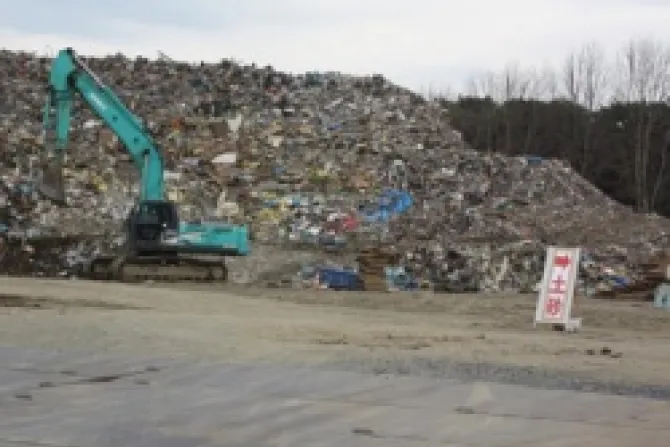Tokyo, Japan, Mar 9, 2012 / 16:00 pm
A year after one of the most devastating Japanese natural disasters in history, Archbishop Leo Jun Ikenaga of Osaka is calling on Catholics to pray for those who died in the earthquake and tsunami and for the reconstruction of the country.
“What happened on March 11, 2011 will never be forgotten in our lifetime,” Archbishop Ikenaga said in a letter to Japanese Catholics.
Archbishop Ikenaga urged the faithful to pray not only that the disaster areas will be reconstructed, but also that those who died as a result of the disaster “will be given eternal repose in the hands of God.”
To mark the first anniversary, bishops from all over Japan will celebrate Masses in their dioceses. Archbishop Ikenaga said it is his hope that these Masses will allow people to pray together “across the nation.”
Despite the horror of the earthquake and tsunami, which left the Japanese “deeply shocked,” Archbishop Ikenaga said he was able to “recognize how wonderful it is for people to support each other” by the generous donations and support of volunteers all over the world.
Koreans showed their support by holding up signs in front of news cameras that said, “We love Japan. Japan will overcome the hardship!”
The archbishop recalled how Japan received donations from “all over the world,” nuclear specialists from overseas offered “generous support,” and locals from “all over Japan” volunteered in the clean up.
“Facing unreasonable and cruel realities, we are largely impressed and encouraged by numerous people at home and abroad who are making every effort to help the affected persons,” Archbishop Ikenaga said.
On Feb. 15, all of the active Japanese bishops offered Mass at Tokyo’s Sekiguchu Cathedral in anticipation of the first anniversary of the disaster that killed an estimated 20,000 people. Approximately 400 people attended the Mass, which was dedicated to the memory of the disaster victims.
In his homily, Bishop Tetsuo Hiraga of Sendai – whose diocese is home to the crippled Fukushima Dai'ichi power plant – offered his thanks to the volunteers who came from Japan and abroad.
Volunteer efforts, mostly being organized by Caritas Japan and the Diocese of Sendai, are now focused on reconstruction and “will be carried on for many years to come.”
“The word 'unimaginable' has become a regular part of my vocabulary in the past year,” Bishop Tarcisius Isao Kikuchi of Niigata and president of Caritas Japan said in a March 11 letter to donors.
Less than a week after the March 11 earthquake, Caritas Japan sent staff to Sendai to work with the local diocese to provide relief and assist in the rebuilding process.
Caritas Japan opened its first relief base in Shiogama, a major fishing and fish processing city, to help clean up homes that were badly damaged but still salvageable. After shoveling mud and debris out of the homes, volunteers drank tea and spoke with residents, giving survivors a “sense of solidarity in rebuilding their lives.”
Ishinomaki, the second largest community in the Miyagi Prefecture, lost 4,000 residents to the tsunami that followed the earthquake. Many survivors were left homeless, but were able to find shelter at Kadonowaki Junior High School, one of Caritas Japan's largest evacuation centers.
In the town of Shizugawa, a fishing town in the Minami-Sanriku district, Caritas Japan opened a cafe-style distribution center “where listening to survivors facilitated relationships.” Since the establishment of temporary housing, Caritas Japan has created “mobile cafes” to distribute supplies and continue “its service of listening.”
(Story continues below)


